GST Council & FM: CBIC cannot have the prerogative to cheat the assessee by manipulative interpretation
The bureaucracy in CBIC is only required to implement the law laid down by the Parliament & not to indulge in manipulative interpretation to deprive the assessee of the legitimate entitlements. The C. Ex. Regime was replaced by the GST w.e.f. 1.7.17 & for that reason, relevant transitional provisions were made in the GST Act, 2017 to take care of the transition so that the assessee is not subject to denial of the legitimate entitlement & duly accepted by the Parliament. To my mind, the transitional provisions are all driven by the common sense & common sense needs to be respected. Therefore, once the legislature has taken the call that closing Cenvat credit as on 30.6.2017 under the erstwhile C. Ex. regime can be carried forward then that basic principle should be followed in each & every situation without exception. Further, what it means is that if this credit could not be carried forward due to a valid reason then the same needs to be refunded in cash because you cannot misappropriate the legitimate entitlement of the assessee under any circumstances. As a matter of fact, this is expressly permitted under the law by the legislature but then being subjected to unnecessary litigation & increasing the interest liability of the department is simply ridiculous. Not only the framing of the provisions was important but even wide publicity was essential & wherever this was applicable then an advisory needed to be issued to the assessee that they are entitled to cash refund & they should claim their refund. This would be the way of functioning in any developed country & they will stretch themselves to ensure that justice not only prevails but is implemented in a dignified manner & visible. However, despite the transitional provision being absolutely clear, I am pained to see that the implementers of the law are only interested in denying the legitimate entitlement one way or the other. It is difficult to comprehend that why such a situation should ever prevail & result in unnecessary harassment of the taxpayers by way of frivolous litigation.
In this first part, we discuss the case of the exporters. The facts of the case are such that exporter obtained several Advance Authorizations for the purpose of exports. The exporter failed to fulfill the export obligation partially. Therefore, the exporter was required to regularize the excess imports by way of the payment of applicable Customs duties at the time of import with interest. The exporter was also required to pay penalty in case the imports were not freely permissible i. e. the imports were restricted. Please note that the default in export obligation has taken place prior to 1.7.17 & the Customs duty liability is discharged beyond 1.7.17. While paying the Customs duty, the AA holder has paid the CVD as well as the SAD as part of the Customs duties. Now, under the erstwhile C. Ex. Regime, the Cenvat credit of CVD as well as SAD was available to the exporter on regularization based on the duty payment challan & no questions were ever raised (because that is basic law i. e. if you have a duty paying document then you are entitled to the Cenvat credit). However, due to the advent of the GST, this credit is no longer possible therefore under the transitional provision, under S 142, this needs to be refunded in cash. The logic being that the entitlement cannot be misappropriated. The assessee would have availed the Cenvat credit in case there was no change in the taxation regime. Now, let us see the position & the ground reality:
1. At the very outset, it is very important to understand the very basics about Export Promotion policy & relevant customs Notification & its implementation:
A. The export promotion policy is formulated by the Director General of Foreign Trade (DGFT) & implemented by the Customs.
B. AA permits exporter to import raw materials, components & consumables etc. going into the manufacture of exports, duty free, subject to the fulfillment of the export obligation therefore Customs Duty exemption Notification is conditional. The duty exemption notification is complete code in itself & specifies very clearly what is to be done in case of the non fulfilment of the export obligation.
C. The DGFT is well aware that default in the fulfillment of the exports is bound to happen due to reasons beyond the control of the exporter therefore default in exports is considered an event happening in the ordinary course of business therefore the exporter is not subject to penal provisions in terms of the law but in case of default in the fulfillment of the export obligation, the exporter is simply required to carry out the regularization of excess imports. Defaults in the fulfillment of the export obligation occur regularly in the ordinary course of business. Therefore, the DGFT has specifically used the term regularization so that the bonafide defaulters are not subject to unnecessary harassment.
D. Finally, once the regularization of the imports stands completed then these imports are at par with any other regular imports & the exporter wass entitled to the Cenvat credit under the erstwhile Cenvat regime. There is no element of doubt & this was happening without any objections of whatsoever nature under the erstwhile C. Ex. Regime in operation. The DGFT was simply given certified copies of the duty paying documents to close the cases & the original duty paying documents were retained by the exporter for claiming Cenvat credit & audit purpose.
E. Under the transitional provisions of the CGST Act, 2017, specifically, 142 (6) (a), this CVD & SAD credit is to be now refunded in cash. The provision is reproduced hereunder:
(6) (a) every proceeding of appeal, review or reference relating to a claim for CENVAT credit initiated whether before, on or after the appointed day under the existing law shall be disposed of in accordance with the provisions of existing law, and any amount of credit found to be admissible to the claimant shall b
e refunded to him in cash, notwithstanding anything to the contrary contained under the provisions of existing law other than the provisions of sub-section (2) of section 11B of the Central Excise Act, 1944 and the amount rejected, if any, shall not be admissible as input tax credit under this Act:
F. It is crystal clear from A to D hereinabove that the Cenvat credit was admissible under the erstwhile C. Ex. Regime & since the credit is no longer admissible, the same will be refundable in cash subject to the provisions of sub-section (2) of section 11B of the Central Excise Act, 1944.
G. Now, please note that the sub-section (2) of section 11B of the Central Excise Act, 1944 deals with the refund being disallowed to the assessee in case it is resulting in unjust enrichment of the assessee (i.e. assessee has passed on the burden of the said duty to the buyer of goods & at the same time claiming the refund from the department thus availing double benefit amounting to unjust enrichment). However, that cannot apply in this case because the credit in itself could not be taken as the event of payment of CVD & SAD has taken place beyond the date of the introduction of the GST Regime on 1.7.2017 therefore the credit itself could not be taken & conclusively no refund could be taken by the assessee or passed on to any other buyer. There cannot be any manipulative interpretation resorted to by the CBIC to deny the cash refund to the assessee as provisioned for by the GST council under the aegis of the government of India. Nevertheless, the Export Promotion Policy is made by the DGFT & in case of regularization of default, the Cenvat credit cannot be denied. The DGFT has used the term regularization for this very reason & since DGFT is the policy maker, the GST council cannot amend or distort the policy. Finally, this will be violative of the Article 14 of the constitution because those who paid the CVD & SAD before 1.7.2017 were allowed the Cenvat credit whereas the same is being denied to those who paid the CVD & SAD beyond 1.7.2017 under the legacy law. This discrimination cannot be permitted under any circumstances. Last but not the least important is the fact that it is nobody’s case that CVD & SAD were not Cenvat able under the C. Ex. Regime & that credit was no longer available to the assessee just because GST regime replaced the old Excise regime on 1.7.2017. Therefore, as per S 142 (6) (a), the cash refund is due to the exporter because S 11 B deals with Refund of duty with reference to the Unjust enrichment & not with the Cenvat credit therefore there is no condition in S 11 B to debar the refund of Cenvat credit (due to the assessee but cannot be taken) to the assessee. This legitimate right of the assessee cannot be thwarted or misappropriated by the CBIC as granted by the DGFT as well as the GST Council. The legitimate refund needs to be allowed in cash as provisioned for in the law. The CBIC has made an irrelevant reference to S 11 B, which is apparent from the title of the S 11 B in itself i. e. it deals with the claim for the refund of duty whereas in this case, the issue at hand is that the assessee is not in a position to claim the Cenvat credit of the CVD & SAD, which was available under the C. Ex. Regime but no longer possible. Please note that it is not a case of refund of duty under the C. Ex. Regime but availment of Cenvat credit in terms of the extant law. The advisory issued vide F. No. CBEC-20/10/11/2019-GST/1001 dtd. 22.6.2020 is untenable because the same is contrary to the transitional provisions contained in 142 (6) (a) of the CGST Act, 2017.The DGFT has permitted regularization of imports & the GST council has accepted that legitimate credit due under the old regime is to be carried out through cash refund then the same cannot be denied in specific cases of default in export because there is no such provision in law (DGFT policy & relevant Customs Notification). The provision of law cannot be manipulated & interpreted differently in case of defaults in exports. In the departmental advisory, the reliance on 142 (8) (a) is misplaced because the CVD & SAD collection is under the erstwhile law i. e. C. Ex. only & therefore cannot be treated as an arrear of tax under the CGST Act, 2017. The point of law is clean & clear that the CVD & SAD is collected as applicable on the date of import under the old C. Ex. Regime & therefore Cenvat credit was available in respect of CVD & SAD paid & refund in cash under the transitional provision 142 (6) (a) cannot be denied.
2. Please note that the Advance Authrisations operated under Customs Notification No. 96/2009-Cus. Dtd. 11.9.2009*. Specifically, please see the paragraph 2 of the notification reproduced below for ready reference:
Quote:
1. that in respect of imports made before the discharge of export obligation, the importer at the time of clearance of the imported materials executes a bond with such surety or security and in such form and for such sum as may be specified by the Deputy Commissioner of Customs or Assistant Commissioner of Customs, as the case may be, binding himself to pay on demand an amount equal to the duty leviable, but for the exemption contained herein, on the imported materials in respect of which the conditions specified in this notification are not complied with, together with interest at the rate of fifteen percent per annum from the date of clearance of the said materials;
Unquote:
*Customs Notification, even if different, the provision about default is same.
From the same, you will kindly observe that in case the export obligation undertaken under the Advance authorization is not fulfilled then under those circumstances, the Advance Authorisation (AA) holder is simply required to settle the duty liability with interest @ 15% per annum. There is no other penal provision in the law therefore no other penal action can be taken against the exporter such as denial of Cenvat credit under the extant law. It is pertinent to point out that the Customs Notification is a complete code to be implemented & therefore once the applicable Customs duties are paid to regularize the default then these excess imports are at par with regular imports & consequently Cenvat credit is available to the assessee. Alternatively speaking, CVD & SAD was Cenvatable under the C. Ex. Regime & therefore the credit is available. Under the old C. Ex. Regime, there was no further process to be carried out but the exporter in default was simply allowed to take the Cenvat credit in respect of the CVD as well as the SAD element on the payment of the applicable duties based on the challan. However, now, the exporter in default is required to file a refund application under Section S 142 (6) (a) of the CGST Act, 2017 because w.e.f. 01.07.2017, the C. Ex. Regime is no longer available but replaced by the GST. With the advent of this change since the CVD/SAD credit is no longer available, the same is refundable in cash as per the transitional provisions.
3. Now, we deal with the provisions contained in relation to the Foreign Trade Policy in the Handbook of Procedures in respect of the regularization of the Bonafide Default. Please refer to the relevant extracts of the paragraph 4.28 in particular reproduced hereunder.
Quote:
4.28 Regularisation of Bonafide Default:**
a) If EO is fulfilled in terms of value, but there is a shortfall in terms of quantity, the Authorisation holder shall, for regularization, pay: (i) to customs authorities, customs duty on unutilized value of imported/ indigenously procured material along with interest as notified; however, for the customs duty component, the authorisation holder has the option to furnish valid duty credit scrips issued under Chapter 3 of FTP and DEPB; and (ii) an amount equivalent to 3% of the CIF value of unutilised imported material through a TR in authorised branch of Central Bank of India indicating the “Head Account: 1453, Foreign Trade and Export Promotion and Minor Head 102”. Authorisation holder shall also be required to obtain a separate authorisation for regularisation of excess imported input. However, provisions of this sub paragraph shall not be applicable if unutilised imported material was freely importable on the date of import.
Unquote:
** The provision about regularisation is largely same for long.
The said paragraph very clearly specifies that in case of default, the AA holder is required to carry out the regularization of the default (further, to regularize the imports under AA, pay to the Customs Authorities the applicable duties along with interest & pay an amount equivalent to 3% of the CIF value of the unutilized import material but the same is not payable in case the material is freely importable) therefore once again, it is crystal clear that there is no provision to deny the Cenvat credit in respect of the CVD as well as the SAD in respect of the Customs duties paid by the AA holder in case of a default.
5. On the other hand, please see the explanation given in Rule 9 (1) of the Cenvat Credit Rules, 2004 itself which says that For removal of doubts, it is clarified that supplementary invoice shall also include challan or any other similar document evidencing payment of additional amount of additional duty leviable under section 3 of the Customs Tariff Act; The legal provision is made to enable the AA holders to avail the Cenvat credit as & when the duty payment in the case of the defaults is carried out. Therefore, based on the duty payment of CVD & SAD (leviable under section 3 of the Customs Tariff Act) made by the exporter on the challans approved by the Customs officials, the Cenvat credit was available to the exporter & since this Cenvat credit cannot be availed due to the change in taxation regime, the refund in cash is to be allowed as provided for in the GST law because the application for refund has been made within the limitation period of 1 year. Not only this, please further refer to the last proviso of the said Rule & it is crystal clear that if the credit of the Additional duty of Customs levied is not to be allowed as credit then the relevant document will bear notation to that effect. In the case of AA defaults, there is no such notation made by the relevant Customs authority therefore once again, it is established beyond any element of doubt that the credit cannot be denied to the AA holder in case there is a default in the fulfillment of the export obligation but the applicable Customs duties are paid subsequently.
6. Based on the above, it is crystal clear that decision in case of M/s. Servo Packaging Ltd. v/s. The Commissioner of CGST & C. Ex. Vide Final Order No. 40098/2020 dtd. 5.2.2020 is bad law because the law does not debar the defaulter from the claim of the Cenvat credit of the CVD as well as the SAD element of the Customs duties paid by the exporter in default once the liability is settled by the exporter. The AA notification is simply a conditional notification because the exemption is contingent upon exports & if the exports are not fulfilled then there is a remedy provided for such bonafide default by way of regularization. Therefore, under no circumstances, the Cenvat credit of CVD as well as SAD be denied once the same stands paid.
7. The adjudicating authorities as well as the appellate authorities have been putting forth every obstacle in the case of cash refund by raising frivolous objections & bent upon harassing the exporters for no reason. Earlier, they said that therefund is not filed within 1 year from the Bill of Entry date but then it was clarified that the duty payment challan is the relevant document & therefore the time limit has to be counted from that date. In some other cases, they took the objection that regularization does not stand completed because the interest is not paid or the redemption memo from the DGFT is not submitted. Now, the point of law is very simple that the relevant authority will take appropriate action under the relevant authority & the Refund official under the CGST & C. Ex. is not an oversight authority to check whether the formalities with the DGFT/Customs department stand completed or not. The availment of Cenvat credit does not depend on the payment of interest or redemption memo but only depends on the Duty payment challan therefore where is the scope for such frivolous objections & harassment of the assesses. Another objection is that the invocation of provisions of S 142 (3) & 142 (6) (a) of the CGST Act is not correct because the amount under reference has not assumed the character of Cenvat credit completely ignoring the fact that the S 142 (3) also refers to duty, tax or any other amount. The point of law is that CVD & SAD was available to the assessee as Cenvat credit but that was no longer available as Cenvat credit because if the change in taxation regime therefore this CVD & SAD was refundable in cash. It is pertinent to point out that common sense tells you that just by the adoption of new taxation system i. e. GST, the obligations under the old C. Ex. Law does not cease to exist. The C. Ex. Law continues to operate in respect of the old cases irrespective of the fact that the new GST regime has been adopted. Further, little application of the mind tells you that there was collection of the CVD & SAD even after the introduction of the GST under the old law only & this establishes beyond doubt that the law continues to operate in respect of the legacy cases. Further, it is pertinent to point out that S 142 does not refer to the Cenvat Credit up to 30.6.2017 because this credit if already taken up to that date then the same is carried forward under the transitional provision. The Section 142(3) & S 142 (6) (a) of the CGST Act, 2017 when read harmoniously lead to the logical conclusion that the CVD & SAD, which was available as Cenvat credit needs to be refunded in cash because the credit is no longer available. Therefore, whichever way you look at it, there is no scope for manipulative interpretation & denial of cash refund of CVD & SAD paid by the defaulter of the Advance Authorization under any circumstances as per the transitional provision contained in the GST Act, 2017.
Last but not the least important is the fact that exporters are doing a service to the nation & they deserve to be treated with dignity rather than denied legitimate entitlement. The legislature has taken a considered view & cash refund is provisioned therefore no manipulation can be permitted. The CBIC should very distinctly comprehend that what was permitted in terms of cash refund under S 142 (6) (a) of the CGST Act, 2017 cannot be taken away by S 142 (8) (a) because then there was no need to incorporate S 142 (6) (a) in the law. At the very least, we should respect the common sense. Therefore, it is incumbent upon the GST Council to ensure that harassment stops & justice prevails.
(Author can be reached at rajivgupta.pec@gmail.com)
******
Disclaimer: The contents of this article are for information purposes only and do not constitute an advice or a legal opinion and are personal views of the author. It is based upon relevant law and/or facts available at that point of time and prepared with due accuracy & reliability. Readers are requested to check and refer relevant provisions of statute, latest judicial pronouncements, circulars, clarifications etc before acting on the basis of the above write up. The possibility of other views on the subject matter cannot be ruled out. By the use of the said information, you agree that Author / TaxGuru is not responsible or liable in any manner for the authenticity, accuracy, completeness, errors or any kind of omissions in this piece of information for any action taken thereof. This is not any kind of advertisement or solicitation of work by a professional.






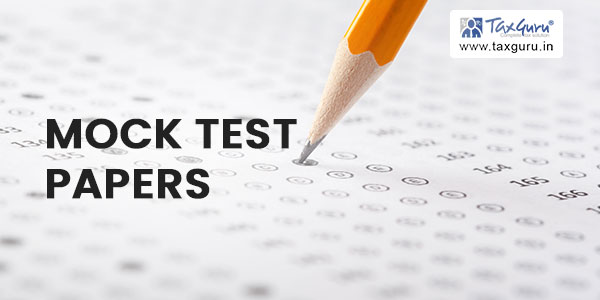



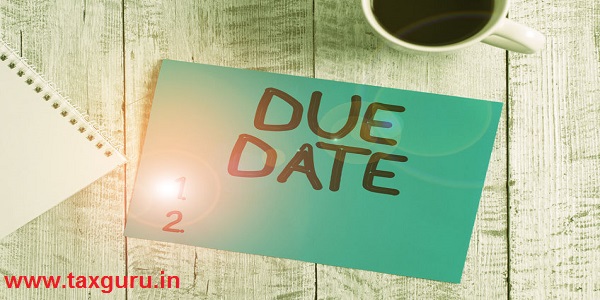



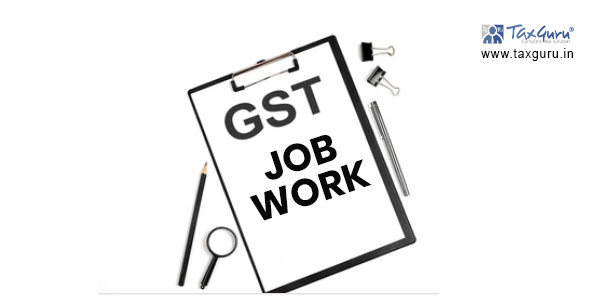

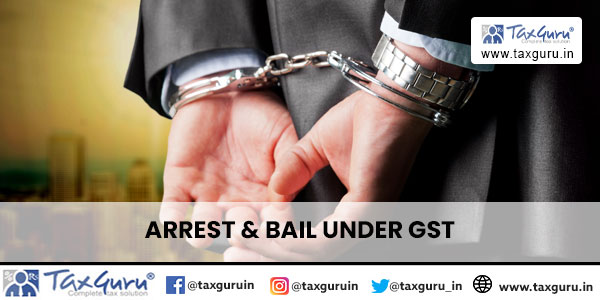
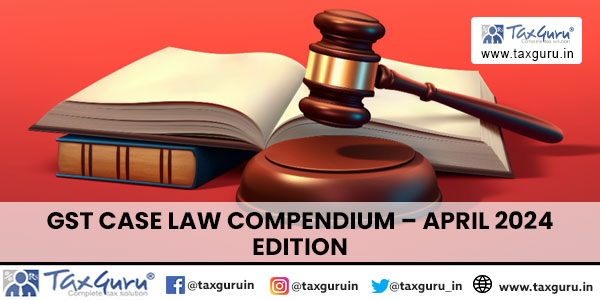

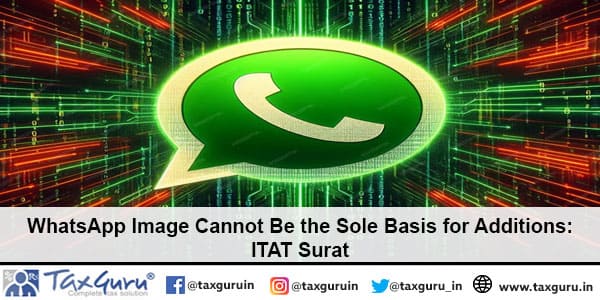
Excellent article for the people. Thanks
I am Rangaraju IRS Additional commissioner Mumbai RTD wants to practice in mumbai . Pl call me when you are free. Thanks .
Excellent Article and Purposeful Views
Sir,
One of my clients has the same above case and their cenvat refund has been rejected.
Pls help us to obtain the refund from gat department.
My cell no is 8691045001 and my office is at Navi mumbai.